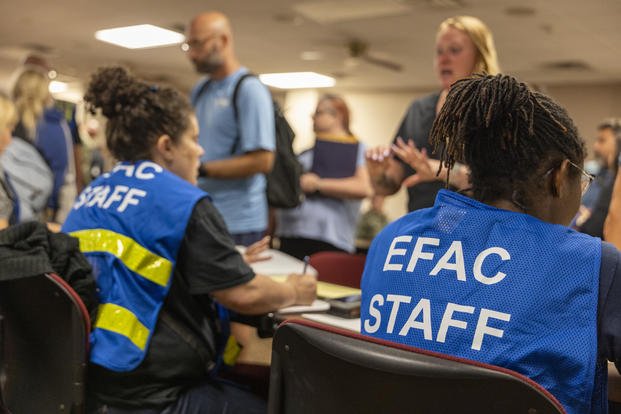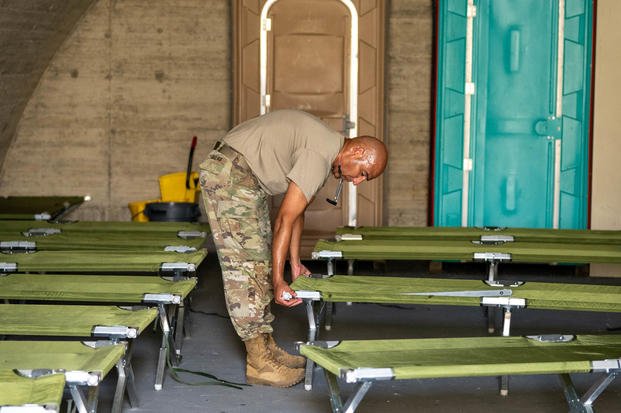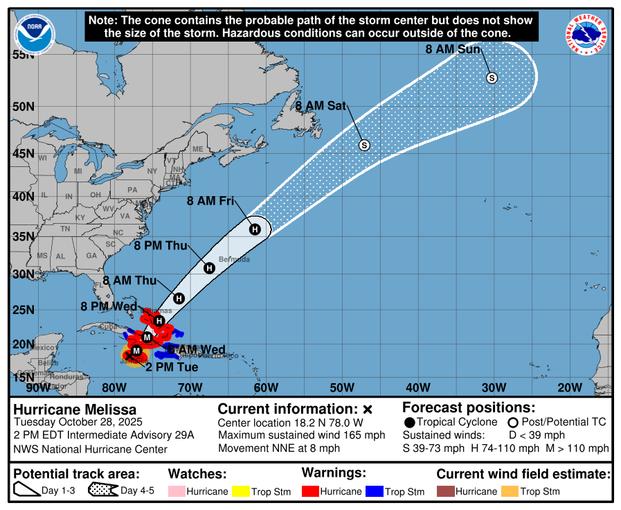As Hurricane Melissa raced toward the Caribbean Sea and Jamaica as a powerful Category 5 storm, the U.S. Navy confirmed the evacuation of hundreds of families from Naval Station Guantánamo Bay.
The National Hurricane Center, under the guise of the National Oceanic and Atmospheric Administration, has warned that the powerful storm touching ground in Jamaica is "extremely dangerous and life threatening." Individuals in the path of the hurricane are instructed to take cover from "catastrophic winds" that are expected to cause flooding and landslides along the island, resulting in widespread infrastructural damage, human displacement, and power outages.
Approximately 864 non-mission essential personnel were flown by the Navy to the mainland as Melissa strengthened into one of the strongest storms of the year. They left Guantánamo Bay on five flights, arriving at Naval Air Station Pensacola on Oct. 25 and 26.

The group included service members’ families, civilian employees, contractors and pets. Guantánamo Bay sits on the western edge of Cuba, close to the projected path of Melissa.
Brad Martin, a retired Navy captain and senior policy researcher at the nonprofit RAND Corporation, told Military.com that Melissa will stress logistics more than combat readiness. Ships operating in the Caribbean may face delayed resupply if ports close or sea routes become unsafe.
Navy Amphibious Ready Groups and Marine Expeditionary Units can shift quickly from patrol to rescue, Martin said. Helicopters can move survivors. Sailors and Marines can deliver food, water and medical aid.
These ships do not carry enough supplies for a large relief effort, he added, so larger shipments would come from the mainland.
NAS Pensacola Commanding Officer Capt. Chandra Newman said in a statement that the installation moved quickly once the storm threat became clear.

“The safety and well-being of our Navy family is always a primary concern,” Newman said. “Right now that means taking care of our Navy family from Guantánamo Bay.”
Pensacola opened an emergency family assistance center and prepared food, lodging and transportation within hours of getting the order. Navy Lodge and Navy Inn rooms were filled. American Red Cross volunteers arrived to help families settle in.
The runway and deep-water port at NAS Pensacola give the Navy flexibility during hurricane season. The base has taken in evacuees before and is often used as a safe harbor for ships during major storms.
Navy Eyes the Track
The Navy said future decisions will track the latest forecasts and storm models. A Navy official said commands are watching Melissa’s movement in real time and will adjust operations as conditions change.

The National Hurricane Center said Melissa remains a dangerous Category 5 storm with sustained winds estimated at 175 MPH.
Warm water, low wind shear, and a well-formed core continue to fuel the storm. Rapid changes in strength remain possible as Melissa moves west.
Forces Can Pivot Fast
The American Red Cross says it does not normally ship blood products to Jamaica or nearby islands, but it can do so during emergencies. Blood shipments move through the State Department, the United Nations, or local Red Cross agencies. No request has been made. Inventories are strong. Teams are standing by.
The State Department has not responded to questions from Military.com on whether the U.S. plans to send humanitarian assistance to Jamaica or Cuba if the storm makes landfall. There has been no comment on whether U.S. embassies in the region are preparing to shelter Americans or move personnel.
U.S. Northern Command has not responded to questions about possible airlift or disaster-relief readiness. The Coast Guard also has not said whether cutters or aircraft have shifted patrol routes. FEMA has not confirmed whether disaster teams or supplies are being staged in the southeastern United States in case the storm turns north after landfall.
Families from Guantánamo Bay are now safe in Pensacola. Navy officials said they are prepared to move more people, more aircraft, and/or more ships if the track shifts.















